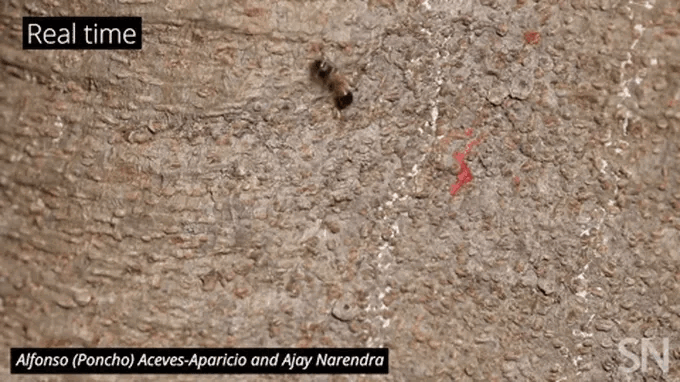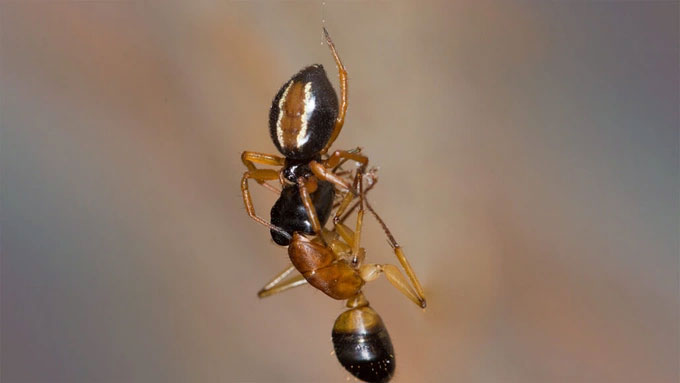The proactive hunting strategy of the Australian ant-eating spider enables it to take down insects that are twice its size.
The spider hunts by “dancing” around its prey. (Video: Sciencenews).
Typically, insects are a favorite food for spiders, but it is rare to see spiders actively hunting ants. This is because ants are equipped with strong jaws and even venom, making them a target that spiders tend to “avoid.”
In fact, less than 1% of spider species choose ants as prey. The rest tend to steer clear of these insects. However, this is not the case for the Australian ant spider (Euryopis uosystemicata).
According to Wikipedia, this spider can hunt various types of insects, but it particularly prefers ants. This ability stems from its unique method of handling prey by “dancing” around and using silk to bind its victim.
This hunting method is so unique that researchers have never observed anything similar in any other spider species. “Their acrobatics are incredibly special. I’ve never seen this type of hunting before,” said Paula Cushing, an evolutionary biologist at the Denver Museum of Nature & Science.

The spider hunts in a completely undetermined manner. (Image extracted from the clip).
Alfonso Aceves-Aparicio, an ecologist at the Max Planck Institute for Chemical Ecology in Jena, Germany, recounted his first encounter with the “dancing” spiders during a hunt. “While walking home, I happened to see some black dots moving back and forth on the pale bark of a eucalyptus tree,” Alfonso recalled.
“As I got closer, I saw a spider swinging around an ant. Initially, I thought the spider was trying to escape from the ant. However, upon closer inspection, I realized the opposite was true.”
Curious, Alfonso borrowed a high-speed camera to capture the spider’s hunting movements. Later, based on the slow-motion footage, he and his colleagues were astonished to see the spider hunting ants in a completely undetermined manner.
Each spider chooses its position on the tree trunk to cut across the ants’ path. When an ant approaches, the spider jumps above it and attaches a silk thread to the ant’s body.

When the ant realizes something is amiss, it means its fate is sealed. (Image: NAS).
According to Alfonso, the movement executed in just a few milliseconds determines whether the hunt will be successful. This means that when the ant notices something unusual, its fate is already sealed.
If the silk thread attaches successfully, the spider will continuously perform its “dancing” routine and move around the ant, effectively wrapping its prey in silk. Another aspect that impresses scientists is their efficiency.
Typically, even seasoned hunters like lions or wolves only have about a 50% chance of finishing off their prey. However, the success rate of the ant spider can be as high as 85%. This figure is based on approximately 60 recorded hunts.
The study was published online in the Proceedings of the National Academy of Sciences of the United States of America (NAS) on September 19, 2022.


















































